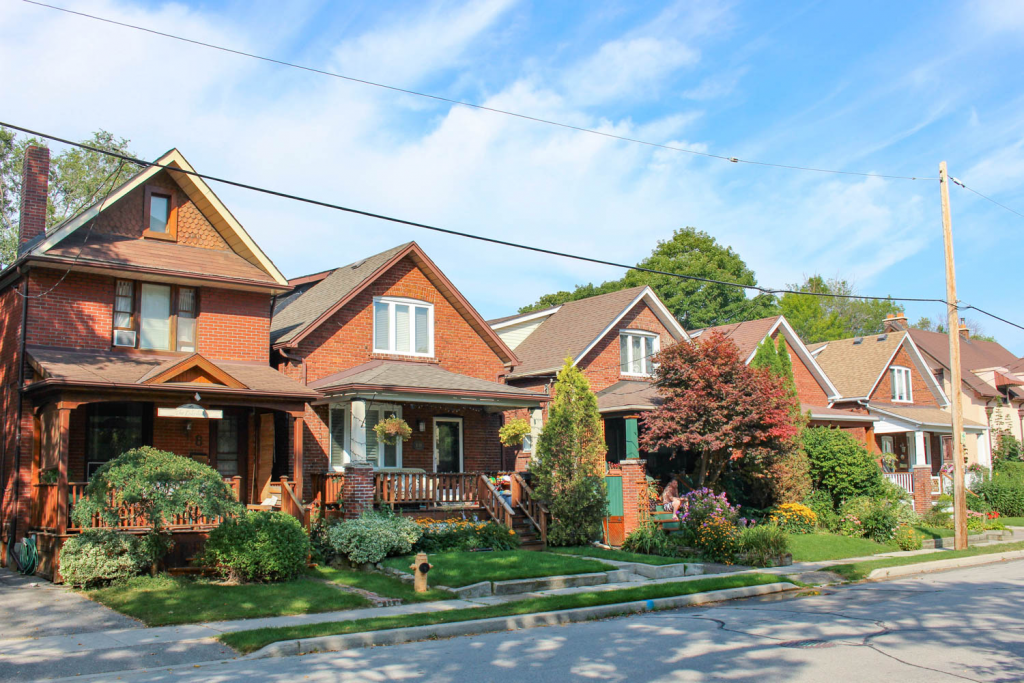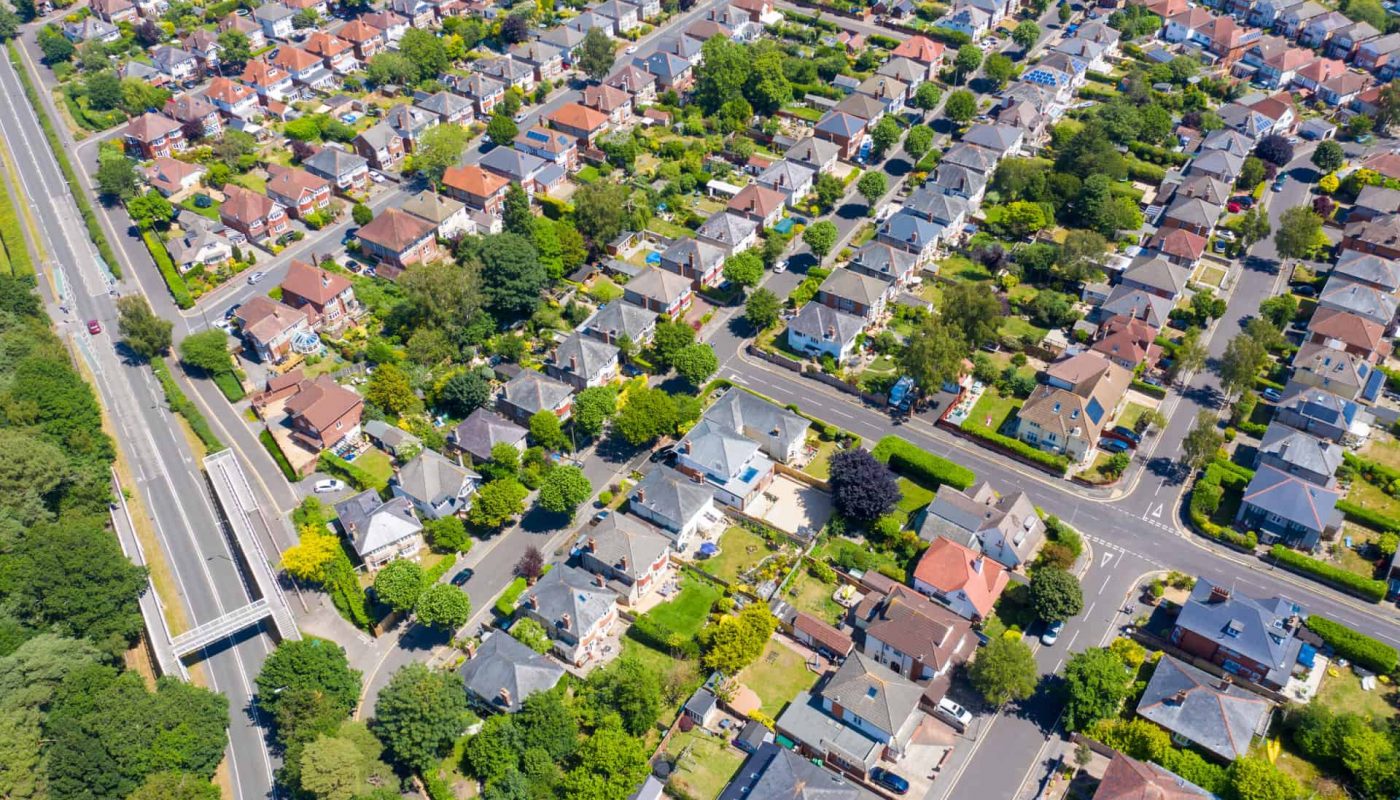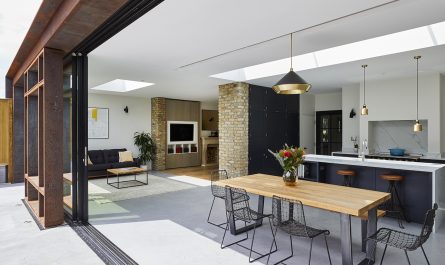Choosing the perfect neighborhood is as crucial as selecting the right house itself. Your neighborhood defines your daily lifestyle, social interactions, work commute, long-term investment potential, and overall satisfaction. When you decide to buy a home, you are not merely purchasing a building but investing in a community and lifestyle that will shape your everyday experiences. A carefully chosen neighborhood will complement your personal goals, financial plans, and future aspirations. Hence, understanding the different factors that influence neighborhood quality is essential.
This comprehensive guide explores all the elements you should consider when evaluating neighborhoods—from social dynamics, school quality, and safety, to cost of living, future growth, and local amenities. You will learn how to balance quantitative data with qualitative aspects to make a well-informed decision. Detailed research, personal visits, and using online tools can guide you through a multi-step process of narrowing down your choices. We will examine various categories, including community vibe, infrastructure, environmental factors, transportation links, and potential for future value appreciation. By delving into these aspects with clarity and thoroughness, you can feel confident about your choice and ensure that your new home truly reflects your desired lifestyle and long-term security.
Understanding that your perfect neighborhood may differ from someone else’s underscores the importance of aligning your choice with your unique needs and goals. In this article, we provide practical strategies, decision-making frameworks, and insights from experts that enable you to evaluate neighborhoods holistically. We also highlight the need for balancing current affordability with future potential and emphasize the significance of personal visits and local research. Ultimately, this guide offers a roadmap for you to navigate the complex process of choosing the ideal neighborhood, thereby setting the stage for a thriving life in your new home.
Assessing Your Lifestyle, Needs, and Priorities: Evaluating What Matters Most When Choosing a Neighborhood

Before you set out to explore specific neighborhoods, it is imperative to reflect on your personal lifestyle, needs, and priorities. Begin by identifying what matters most to you. Are you searching for an area that offers a vibrant nightlife, or do you prefer a quiet, family-friendly community with excellent schools? Consider your current life stage and your long-term plans. For instance, if you are starting a family, factors such as a low crime rate, reputable schools, and safe, pedestrian-friendly streets become paramount. In contrast, if you are a young professional or a frequent traveler, proximity to public transportation, dynamic cultural offerings, and flexible rental markets might take precedence.
Write down a detailed list of your must-haves and nice-to-haves, and rank them in order of importance. Factors to consider include the proximity to work, the quality of local schools, healthcare facilities, shopping and dining options, green spaces, and recreational activities. Additionally, take into account the size of the neighborhood and whether you prefer more rural, suburban, or urban environments. This introspection helps you create a clear profile of your ideal neighborhood, which serves as a baseline for your research.
Moreover, consider your social needs. Think about the type of community you thrive in a close-knit neighborhood with active community events might be perfect for some, while others may prefer a more independent and less socially demanding environment. Your lifestyle may also include specific hobbies or interests that require particular infrastructure for example, access to parks for jogging or cycling, cultural centers for art and music, or proximity to tech hubs for networking and career opportunities. By starting with a clear understanding of your priorities, you lay the foundation for a systematic approach to choosing a neighborhood that meets both your immediate needs and future aspirations.
Researching Neighborhoods: Gathering Data, Reading Local Reports, and Using Online Tools for In-Depth Analysis
Research is a critical step in selecting the right neighborhood.These platforms provide valuable statistics on crime rates, school ratings, average property values, rental costs, and cost of living. Using these tools, you can compare neighborhoods objectively and identify those that meet your standards for safety, education, and financial feasibility.
In addition, local news sources, municipal reports, and economic forecasts provide insight into future neighborhood trends. For instance, checking local planning commission reports can reveal upcoming infrastructure projects, community developments, and zoning changes that could impact property values and quality of life. Publicly available data on school performance, local crime statistics, and community surveys should all be part of your research. By compiling and analyzing this information, you can create a shortlist of neighborhoods that appear to offer the best match to your needs.
Use online maps, virtual tours, and neighborhood video guides to get a better feel for the area even before you visit. Many websites now offer interactive tools that display local amenities, walkability scores, and transportation options. Such resources provide a comprehensive view of the neighborhood’s layout and functionality. Additionally, forums and community groups on social media offer firsthand reviews from residents who share their experiences about living in a particular area. Combining these various sources of information provides a well-rounded picture that helps you decide whether a neighborhood aligns with your lifestyle. The key is to remain methodical and use multiple data points, ensuring that your decision is based on objective criteria as well as personal preferences.
Cost of Living and Affordability: Understanding How Expenses, Taxes, and Property Values Impact Your Choice
One of the most practical aspects of choosing a neighborhood is understanding its cost of living. This includes evaluating not only the price of housing but also property taxes, insurance premiums, utility costs, and even local fees. A neighborhood that appears ideal based on schools or community feel may not be the best match if the cost of living is prohibitively high. To assess affordability, start by looking up average home prices and rental rates in the area.
In addition to direct housing costs, consider indirect expenses such as transportation costs, which are affected by the distance to work, the availability of public transportation, and local traffic patterns. Neighborhoods with higher property taxes might also have lower utility costs due to municipal subsidies, or vice versa. Evaluate how much you will spend each month in total when living in a specific area, including grocery prices, healthcare costs, and other everyday expenses. This comprehensive view helps you decide whether the neighborhood aligns with your lifestyle without exceeding your budget.
Understand that cost can also be dynamic. Some neighborhoods may have lower upfront home prices but high recurring costs, while others might have expensive homes with the benefit of lower overall living expenses. Research trends and predictions for property value appreciation, as these factors influence your long-term investment potential. Balancing current affordability with future gains is essential when choosing a neighborhood that fits your financial situation both now and in years to come.
Analyzing Commute Times, Transportation Options, and Infrastructure: The Role of Accessibility in Your Neighborhood Choice
Transportation and accessibility are key factors in evaluating a neighborhood, as they significantly affect your daily quality of life and long-term satisfaction. Start by analyzing the typical commute time from the neighborhood to your workplace. The shorter your commute, the more free time you will have in your day, which can improve overall well-being.
In addition to commute times, assess the availability and quality of transportation infrastructure. Consider whether the area is served by reliable public transit, such as buses, subways, or trains, and whether the local roads are well-maintained. Neighborhoods with multiple transportation options provide greater flexibility, especially if you prefer to use eco-friendly alternatives such as cycling or walking.
Additionally, check for upcoming infrastructure projects that might affect the neighborhood. New roads, bridges, or transit lines can increase accessibility and boost property values, but they might also lead to temporary disruptions or noise. Balancing these potential benefits and drawbacks is essential. A well-connected neighborhood can save you money on transportation costs and provide easier access to work and leisure activities, all of which are important components in making the right decision.
Evaluating Local Amenities and Community Infrastructure: Schools, Healthcare, Recreation, and More
The quality and availability of local amenities play a significant role in shaping your daily lifestyle. When choosing a neighborhood, look at the range of services and facilities available within a reasonable distance from your potential home. Top priorities might include the quality of local schools if you have children or plan to start a family. Highly rated schools often enhance the desirability of a neighborhood, although they can also lead to higher property prices. Consult state or local education department websites or use school-rating tools like GreatSchools to get detailed information on academic performance and extracurricular opportunities.
Beyond schools, assess other critical amenities such as healthcare facilities, including hospitals, clinics, and specialized care centers. Proximity to high-quality healthcare is vital for both routine check-ups and emergencies. Similarly, consider recreational amenities like parks, gyms, community centers, and cultural venues such as theaters and libraries. Neighborhoods that offer a broad range of amenities tend to foster a higher quality of life and stronger community bonds.
Don’t overlook smaller conveniences like grocery stores, shopping centers, and restaurants. The availability of these services reduces the need for long trips and contributes to a more convenient lifestyle. Investigate whether the neighborhood has community events, farmers’ markets, or local festivals that can enhance your overall sense of community and belonging. Local infrastructure, including quality sidewalks, bike lanes, and public spaces, also adds to a neighborhood’s livability. Well-maintained public infrastructure suggests that the local government is invested in the community’s well-being, which can positively influence property values over time.
In summary, evaluating local amenities and infrastructure provides a comprehensive picture of what it will be like to live in the neighborhood and whether it supports your lifestyle and long-term goals.
Assessing Safety and Crime Rates: How to Research and Evaluate Neighborhood Security
Safety is a paramount consideration when choosing a neighborhood, as it directly impacts your quality of life and the long-term desirability of the area. Start by researching crime statistics using sources such as local police department websites, NeighborhoodScout, or City-Data.com. These platforms provide detailed information on various types of crime, from property offenses to violent crimes, and allow you to compare neighborhoods based on safety. It’s important to look at both recent and historical data to get a sense of trends over time. A consistently low crime rate is a positive indicator and can also lead to lower homeowners insurance premiums, saving you money over the long term.
Beyond numerical data, consider community feedback. Online forums, social media groups, and neighborhood watch organizations can offer a more human perspective on safety. Reading reviews from local residents can reveal insights that raw data might not capture, such as how safe residents feel and whether there are common concerns about specific types of crime. Visiting the neighborhood at different times of day can also provide a firsthand impression of safety and activity levels. Look for well-lit streets, active community patrols, and visible security measures, as these often correlate with a secure environment.
Safety factors extend beyond crime statistics. Consider natural disaster risks, such as flooding, earthquakes, or severe storms, depending on your region. Local governments and insurance companies often provide information about the likelihood of these events. Evaluating these factors helps ensure that your chosen neighborhood not only supports a pleasant lifestyle today but also remains resilient in the long run.
Exploring the Neighborhood’s Social and Cultural Environment: Community Vibe, Diversity, and Quality of Life
The social and cultural environment of a neighborhood is a critical factor that influences your overall satisfaction and day-to-day living experience. It is not just about the availability of amenities or the quality of schools; it’s also about the intangible qualities that make a community feel like home. Begin by immersing yourself in local community forums, social media groups, and neighborhood associations. These sources provide insights into the community vibe, resident demographics, cultural diversity, and the level of social cohesion.
Evaluate the neighborhood’s social fabric by researching local events, festivals, and community gatherings. A neighborhood with a vibrant mix of cultural events and active community participation often fosters a sense of belonging. Diversity in a community can enhance your social experiences by exposing you to various traditions, cuisines, and perspectives. Consider whether the area aligns with your personal values, whether you appreciate a multicultural environment, or if you prefer a more homogeneous community.
Quality of life is also affected by the availability of public spaces, such as parks and community centers, that encourage social interactions and outdoor activities. Look for evidence of community investment, such as well-maintained public areas, clean streets, and active neighborhood associations. A positive community atmosphere can have a significant impact on your long-term satisfaction with your home. Furthermore, a friendly, welcoming environment often means that residents look out for one another, which enhances overall safety and personal security.
Taking the time to visit the neighborhood, attend local events, and speak with current residents can provide a clearer picture of the social dynamics. Observations during these visits are invaluable; for instance, notice whether people are out walking, chatting, or engaging in community activities. These observations can be critical when assessing whether you would feel comfortable and at home in the area.
Evaluating Amenities and Services: How Local Businesses, Schools, Hospitals, and Recreation Affect Your Neighborhood Choice
Local amenities and services play a significant role in determining the overall livability of a neighborhood. These amenities not only affect your daily routine but also have long-term implications for property values and community satisfaction. Start by analyzing the availability and quality of essential services. For families with children, the quality of local schools is paramount. Research school ratings, extracurricular programs, and proximity to educational institutions. Often, high-performing schools correlate with higher property values but also contribute to a stable and safe community.
Healthcare facilities are another critical aspect. Consider the distance to hospitals, urgent care clinics, and specialized medical centers. Access to quality healthcare ensures that you and your family receive prompt attention during emergencies and have ongoing access to routine care. In addition, look at recreational amenities such as parks, sports facilities, gyms, and cultural centers. These resources enhance your leisure time and contribute to an active, healthy lifestyle. Local shopping centers, grocery stores, and dining options also add convenience to daily living.
Beyond these basic services, think about additional conveniences such as libraries, community centers, and public transportation hubs. All these features not only improve quality of life but also influence property values by making the neighborhood more attractive to future buyers. When choosing a neighborhood, take the time to evaluate the complete range of amenities and services available, ensuring that they align with your current needs and future aspirations. This comprehensive assessment will help you choose a neighborhood where you can thrive both personally and financially.
Researching Future Development and Growth Trends: Ensuring Long-Term Value and Community Vibrancy
A key element of choosing the perfect neighborhood is assessing its future development and growth potential. Understanding the trajectory of a neighborhood can help you decide if it is likely to retain or improve its value over time. Research local government plans, redevelopment projects, and zoning changes that might influence future growth. Many cities publish long-range plans and development agendas on their official websites, which can offer insights into upcoming infrastructure projects, commercial developments, or renovations of public spaces.
Speak with local real estate agents and attend city council meetings to gather firsthand information on what the future may hold. Future growth often correlates with increasing property values and stronger community investments. However, rapid development can also bring challenges, such as increased traffic, overcrowding, or changes in the neighborhood’s character. Therefore, it is important to balance future growth prospects with the current quality of life.
If you plan to invest in a home for the long term, choosing a neighborhood with positive growth trends is essential.
Look for areas where new businesses are opening, public transportation is expanding, or infrastructure is being upgraded. Such developments often create upward pressure on property values, making your investment more secure. Conversely, if a neighborhood shows signs of stagnation or decline such as rising vacancy rates or a slowdown in new construction this may be a red flag. By considering future growth trends, you ensure that you are not only choosing a neighborhood that suits your current lifestyle but also one that has the potential to provide long-term value and vibrancy.
The Role of Technology and Online Resources: Using Digital Tools for Neighborhood Research and Decision-Making
In today’s digital age, numerous technological tools and online resources can significantly streamline your neighborhood research process. These tools allow you to gather accurate data, view virtual tours, and obtain community reviews without leaving your home.
Walkability scores, public transit maps, and local cost-of-living calculators further help you narrow down your choices by providing quantitative metrics that complement qualitative impressions. These digital tools also include filters that allow you to specify your priorities, such as proximity to work, outdoor spaces, or cultural landmarks. Social media platforms and local community forums provide additional insights as residents share their experiences, recommendations, and concerns. By leveraging technology in your research, you can create a comprehensive picture of each neighborhood before making personal visits.
Using these online resources not only saves time and effort but also ensures that your decision is backed by the latest data. Combining digital research with in-person visits gives you a well-rounded perspective, ensuring that you choose a neighborhood that fits your needs now and in the future. Embrace these tools to empower yourself and make a data-driven decision that aligns with your financial and lifestyle goals.
Personal Visits and Community Engagement: Experiencing the Neighborhood Firsthand to Inform Your Decision

While online tools and data are incredibly useful, experiencing a neighborhood in person remains one of the most effective methods to gauge whether it is the right fit for you. Personal visits allow you to immerse yourself in the community, observe day-to-day activity, and assess the general atmosphere of the area. Plan visits at different times of day and on different days of the week to see how the neighborhood changes over time. Walk around the area, visit local businesses, and talk to residents to gather firsthand impressions about safety, friendliness, and community spirit.
Pay attention to details such as the condition of public spaces, the cleanliness of the streets, and the overall noise levels. Observe the level of community involvement by noting how often neighbors interact or participate in local events. Look for signs of local pride, such as well-kept parks and community bulletin boards that advertise local happenings. This firsthand experience will complement the quantitative data and online research you have already conducted. Engaging with the community not only provides insights but also helps build a personal connection to the neighborhood. Attending local events or joining neighborhood groups can further enhance your understanding and even open up networking opportunities that might help you settle in more comfortably if you decide to move there.
Matching Your Future Goals With Neighborhood Characteristics: Aligning Long-Term Vision With Current Market Realities
Choosing the perfect neighborhood should be viewed as an alignment of your long-term personal and professional goals with the characteristics of the area. Begin by imagining your ideal future. Where do you see yourself in five, ten, or twenty years? Consider your career ambitions, family plans, and lifestyle preferences. Do you desire an urban environment that offers a fast-paced, dynamic lifestyle, or do you prefer a calm suburban setting with ample space for raising a family? Your ideal vision of the future should guide your decision.
Once you have a clear picture, compare it with the current realities of the neighborhood. Analyze factors such as job market stability, average income levels, demographic trends, and the overall economic outlook of the area. Research future development plans and community projects that indicate growth and improvement. For instance, if you plan to start a family and value excellent education, prioritize neighborhoods with top-rated schools and family-friendly amenities. If you are focused on personal growth and career development, look for areas with strong employment prospects, robust public transportation, and cultural opportunities. Matching your future goals with neighborhood characteristics will help ensure that your choice is not only suitable for your current needs but will continue to serve you well into the future. This strategic alignment is crucial for long-term happiness and financial stability.
Social Networks and Cultural Fit: Assessing How the Community’s Demographics and Values Align With Your Own
The ideal neighborhood is not only about practical metrics like cost and safety; it is also about the social environment and cultural fit. When evaluating neighborhoods, consider whether the local community’s demographics and values align with your own. A neighborhood’s character can greatly influence your overall satisfaction and integration into the community. Look for areas with a balanced mix of ages, cultures, and professions that resonate with your lifestyle. If you value diversity and cultural richness, choose neighborhoods that are known for vibrant community life, local festivals, art scenes, and multicultural events.
Additionally, explore the presence of social clubs, hobby groups, and volunteer organizations that align with your interests. If you have strong social or professional networks, consider whether the neighborhood supports opportunities for networking and personal growth. Speak with local residents about their experiences and gauge the community spirit. This is particularly important if you value close relationships and community involvement. When you feel culturally and socially connected to a neighborhood, your day-to-day experience improves significantly, contributing to a higher quality of life. Taking the time to assess the cultural fit will ensure that you select a neighborhood where you feel comfortable, welcome, and able to thrive over the long term.
Environmental and Lifestyle Considerations: How Green Spaces, Noise Levels, and Local Vibes Influence Your Decision
Environmental factors and lifestyle preferences also play a major role in determining the right neighborhood for you. Consider the amount of green space available, such as parks, community gardens, and nature trails. Access to outdoor recreation can greatly enhance your quality of life, providing opportunities for exercise, relaxation, and family time. Evaluate the air quality, noise levels, and overall ambiance of the area. A quiet, well-maintained neighborhood with plenty of natural beauty might be ideal if you value tranquility and outdoor activities. In contrast, if you thrive on the energy of a bustling urban center with numerous entertainment options, a vibrant and busy environment may suit you better.
Local vibes are often set by how residents interact with one another and the overall aesthetic of the neighborhood. Are the streets lined with mature trees and well-kept homes? Do local businesses contribute to a lively and supportive atmosphere? Take note of any community initiatives such as farmer’s markets, local art exhibits, or community clean-up days. These activities can be indicators of a close-knit community that values collaboration and sustainability. By factoring in these environmental and lifestyle considerations, you can ensure that the neighborhood you choose supports not only your daily needs but also enhances your overall well-being and happiness.
Utilizing Local Expertise and Professional Guidance: The Role of Real Estate Agents, Local Planners, and Community Leaders
Professional guidance can be invaluable when choosing the perfect neighborhood. Real estate agents who specialize in a particular area possess firsthand knowledge of local market trends, community insights, and upcoming developments. They can provide personalized recommendations based on your specific needs and budget. Additionally, local planners and community leaders often have a pulse on future projects, zoning changes, and community development plans that can affect property values and quality of life.
Consult with multiple experts to gain a well-rounded perspective. Your real estate agent can help you narrow down neighborhoods based on objective factors like school quality, safety, and average home prices, while local community leaders may offer insights into the social and cultural dynamics of the area. Financial advisors might also share information on how local economic trends affect property investment opportunities. By tapping into these various sources of expertise, you can make a more informed decision that takes into account both the current state of the neighborhood and its potential for future improvement. Professionals can also introduce you to local community events, social clubs, and neighborhood associations that help you assess the true character of the area.
Comparing Pros and Cons: An Analytical Framework to Evaluate and Rank Neighborhoods
Once you have gathered plenty of information on potential neighborhoods, the next step is to compare the pros and cons systematically. Create an analytical framework that assigns weight to each factor based on what is most important to you. For instance, if you value safety above all, give extra points to neighborhoods with lower crime rates and strong community policing. If school quality is paramount, rank neighborhoods by the performance of local schools. Also, evaluate factors like cost of living, commute times, local amenities, and social environment.
Construct a matrix or spreadsheet where you list each neighborhood and assign scores based on your prioritized criteria. Use this quantitative approach alongside your qualitative impressions from personal visits and expert consultations. This balanced framework allows you to compare areas objectively and decide on the neighborhood that best aligns with your overall lifestyle and financial goals. The process ensures that your final decision is data-driven, well-reasoned, and tailored to your unique priorities. Analytical ranking can simplify a complex decision by breaking it down into manageable components that you can compare directly.
The Importance of Future-Proofing Your Choice: Considering Long-Term Trends, Investment Potential, and Quality of Life
Choosing a neighborhood is not only about meeting your immediate needs but also about ensuring that your decision remains sound for years to come. Future-proof your choice by considering both the current state and long-term trends of the area. Investigate upcoming developments, planned infrastructure improvements, and potential shifts in the local economy that could affect property values and quality of life. Understanding these trends can help you choose a neighborhood that is likely to appreciate in value, thereby protecting and even enhancing your investment.
Furthermore, consider your long-term lifestyle and career plans. Ask yourself if this area will still be a good fit in five, ten, or twenty years. Will job opportunities continue to thrive here? Are local schools likely to maintain high standards? What are the prospects for community development and cultural enrichment? By evaluating these aspects, you prepare yourself for a future in which your neighborhood continues to support your evolving needs. A forward-looking approach ensures that the area you choose not only meets your current expectations but remains desirable and valuable over time.
Conclusion: Embracing a Comprehensive Approach to Choosing the Perfect Neighborhood for Your Next Home
Selecting the ideal neighborhood for your next home is a multifaceted process that involves balancing your lifestyle, financial capacity, and long-term goals with the unique features of different communities. In this guide, we have covered everything from assessing your personal needs and conducting rigorous research to evaluating cost, safety, amenities, and long-term growth potential. Each element, from local transportation to social and cultural dynamics, plays a critical role in shaping your experience and your investment.
By leveraging online tools, gathering detailed local data, and seeking professional guidance, you can develop a holistic understanding of what each neighborhood has to offer. Using a combination of quantitative analyses and personal impressions will help you create a complete picture that aligns with your vision of the perfect living environment. Remember that the right neighborhood is not chosen solely on paper; it is experienced in person, felt through community interactions, and measured by its ability to meet both your immediate needs and long-term aspirations.
As you move forward in your home search, take the time to visit your shortlist of neighborhoods, engage with residents, and review local plans and trends. This careful, data-driven, and personalized approach will empower you to choose a neighborhood where you can truly thrive. In the end, the perfect neighborhood is one that offers safety, convenience, affordability, and a strong sense of community all of which enhance both your day-to-day life and your long-term financial prospects. Embrace the journey with an open mind and a detailed plan, and your next home will be located in a neighborhood that truly feels like the right fit for you.



